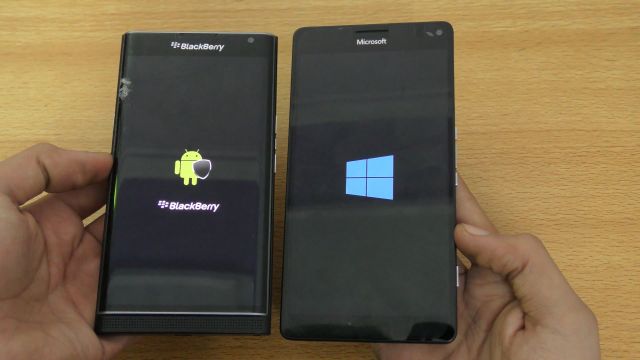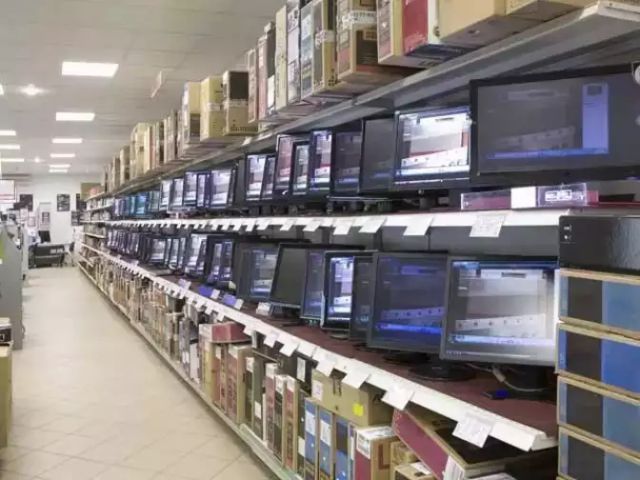
by admin | May 25, 2021 | Business, Large Enterprise, Markets, Technology
 San Francisco : Former rivals BlackBerry and Microsoft have announced they were collaborating to offer enterprises a solution that integrates the latter’s expertise in mobility and security with Microsoft’s Cloud and productivity apps.
San Francisco : Former rivals BlackBerry and Microsoft have announced they were collaborating to offer enterprises a solution that integrates the latter’s expertise in mobility and security with Microsoft’s Cloud and productivity apps.
Through this partnership, the tech titans have collaborated on a first-of-its-kind solution — BlackBerry Enterprise “BRIDGE”.
“We saw a need for a hyper-secure way for our customers to use native Office 365 mobile apps. BlackBerry Enterprise ‘BRIDGE’ addresses this and is an example of how BlackBerry and Microsoft continue to securely enable workforces to be highly productive in connected world,” Carl Wiese, President of Global Sales at BlackBerry, said in a statement late Monday.
“Our customers choose Microsoft 365 for productivity and collaboration tools that deliver continuous innovation. Together with BlackBerry, we will take this to the next level and provide enterprises with a new standard for secure productivity,” said Judson Althoff, Executive Vice President of Worldwide Commercial Business at Microsoft.
By making Microsoft’s mobile apps seamlessly available from within BlackBerry Dynamics, enterprise users will now have a consistent experience when opening, editing, and saving a Microsoft Office 365 file such as Excel, PowerPoint, and Word on any Android or iOS device.
As part of the collaboration, Microsoft added that BlackBerry Dynamics, along with the company’s Secure, UEM Cloud, BlackBerry Workspaces and AtHoc platforms are also now available on Azure Cloud, thus, allowing more flexibility for workers on the go.
—IANS

by admin | May 25, 2021 | Business, Corporate, Corporate Governance, Large Enterprise
 By Porisma P. Gogoi,
By Porisma P. Gogoi,
New Delhi : Aside from the fact that a host of products like television sets, imported mobile phones and LED lamps are going to become expensive with a hike in their basic customs duty, industry stakeholders are hopeful that the government’s move will wash out the unorganised players in the consumer durables goods segment.
“Rise in import duty will surely impact players who were sourcing and importing large percentage of their LED lamp requirements. This will also impact the unorganised or unbranded segment which was importing cheap LED lamps and products from China,” Puneet Dhawan, Senior Vice President and Business Head, Lighting, Orient Electric, told IANS.
Dhawan claimed that his company has indigenised manufacturing of more than 95 per cent products and will have practically no impact due to the duty hike.
On November 15, the Finance Ministry increased the basic customs duty on a host of products, including electronic items like mobile phones and televisions, to curb surging imports — making them more expensive — and also to give a boost to the ‘Make in India’ programme.
According to a government notification, the customs duty on mobile phones has been hiked to 15 per cent, TV sets and microwaves to 20 per cent, video cameras to 15 per cent and LED lamps to 20 per cent.
Withdrawing the exemption of basic customs duty on LCD, LED and OLED panels, which are used in TV manufacture, the government has imposed a 7.5 per cent duty.
“Many temporary players that are there in the market will suffer a setback. It will be a kind of wash-out for them because it will be very difficult for them to survive without inputs,” said Riya Kabra, General Manager Commercials, Truvison, a Europe-based consumer electronics and appliances company.
Truvison, which entered the domestic market in 2016, offers a range of consumer durables like LED TVs, music systems and home appliances like air conditioners.
Kabra predicted that the surge in prices will be temporary and will soon stabilise.
“For us, the impact will be mild and short term. We had already anticipated this hike for the ‘Make in India’ concept. There would be a price hike definitely but that would be short term. By second quarter the prices will stabilise,” Kabra told IANS.
Manmohan Ganesh, Chief Operating Officer, BPL, said that with the support of the government for domestic production, the industry will mature with more manufacturers available for critical parts and will curb imports.
“There used to be a time when we produced everything in-house. We were actually at a disadvantage when the government policies changed and allowed free or easy imports of these products. The government also signed free-trade agreements wih some countries and products also came in cheap. It did not make sense to manufacture a lot of products (domestically),” Ganesh told IANS.
“Now with some amount of support to local manufacturers, we will also internally decide what more products we want to make locally,” he added.
Ganesh further said: “We never had the scale or the opportunity because parts were not usually available. So even when we made a product, we were still dependent on international sources for certain critical components.”
He expects the industry to mature further and critical parts to be manufactured in the country.
Regarding the hike of product prices, Dhawan said: “As far as hike in prices are concerned, this will surely lead to pressure on these (unorganised) players as with the current market dynamics they will find it increasingly difficult to pass the hike on to the consumers and perhaps would have to absorb most of it.”
Ganesh added that unless the GST rates on televisions are brought down, there will be an impact on the prices for the entire industry, which in turn would affect sales.
“At the moment, so long as there is no reduction in the GST rate, the prices will go up and there could be some impact on sales. I do not believe it (the impact) will be large, since it will impact the entire industry,” Ganesha said.
“When costs go up for a certain brand, that brand sale may come down. But if the whole industry, every manufacturer, takes the prices up, it does not mean that the customers will stop buying televisions or other appliances,” he added.
(Porisma P. Gogoi can be contacted at porisma.g@ians.in)
—IANS

by admin | May 25, 2021 | Business, Large Enterprise
 New Delhi : (IANS) Sales of affordable smartphones with in-built camera and internet-enabled features are set to shoot up to 160 million in 2016-17 from 100 million in 2015-16, an Assocham study said on Wednesday.
New Delhi : (IANS) Sales of affordable smartphones with in-built camera and internet-enabled features are set to shoot up to 160 million in 2016-17 from 100 million in 2015-16, an Assocham study said on Wednesday.
Consequent to smartphones serving the needs of amateur photographers and enthusiasts, the rise of such phones is eating into the demand for digital cameras which witnessed a drop in sales by more than 35 percent in the last one year, the study said.
“Technology is changing at such a fast pace that product developers have to think ahead of times, or else the top selling products of the present times can become outdated, without the manufacturers and those dominating the market today realising it,” said Assocham secretary D.S. Rawat.
“There has been a subsequent rise in the demand of smartphones in the country in the last one year and one of the reasons behind this growing importance is largely due to the increase in social networking site.
“Most of the youth in the country share photographs online and upload photographs which has become a new trend in the metros thus giving rise to the need for smartphones,” Rawat added.
Smartphone sales more than doubled from 44 million units in 2013 to 100 million units in 2016. The volume of smartphone sales is expected to touch 160 million units by 2017, the study added.
“Another feature of the smart devices market in India is that the country has a huge telephone subscribers base of about a billion users who are becoming aspirational even at the bottom of pyramid,” said Rawat.
According to the Assocham survey, most of the respondents said the biggest advantage of clicking pictures with smartphones is that they can be shared instantly with friends and family– a feature which is absent with most of the point and short cameras.
Almost 75 percent of the sales of mobiles and tablets came from consumers residing in tier-I and tier-II cities.
As per the study, sales of personal computers and MP3 players have already started declining due to the impact of smartphone and tablet adoption.

 San Francisco : Former rivals BlackBerry and Microsoft have announced they were collaborating to offer enterprises a solution that integrates the latter’s expertise in mobility and security with Microsoft’s Cloud and productivity apps.
San Francisco : Former rivals BlackBerry and Microsoft have announced they were collaborating to offer enterprises a solution that integrates the latter’s expertise in mobility and security with Microsoft’s Cloud and productivity apps.

